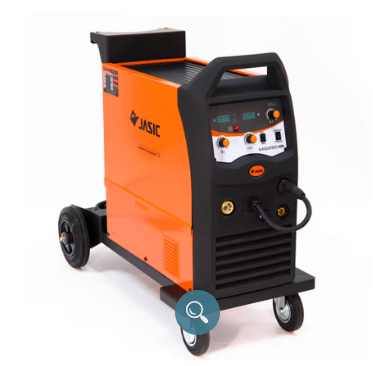Information
-
-
Equipment Name:
-
Equipment No.:
-
Supplier
-
R&D Specialist Responsable:
-
Perform by:
-
Nominal Capacity:
-
Date:
-
Location:
A – ERGONOMICS
-
1. Do the equipment or workplace have appropriate conditions in accordance with the TST 000067_EHS Machine and Equipment Standard and ISO 11226 Ergonomics Standard?
-
2. Are control panel, HMI, reset placed at appropriate height (height of the operator's eye level)?
-
3. Workstation’s height between 900 mm and 1100 mm?
-
4. Cart handles with a diameter between 30 to 35 mm?
-
5. Does the operator's seat enable a stable seating position?
-
6. The distance between the two hand controls cannot be less than 600 mm (23.62 inches).
-
7. If the machine is a source of vibration, does the seat reduce vibration transmitted to the operator to the lowest level that is reasonably possible?
-
8. Are available chairs with adjustable seat and backrest height in seated workstations? Is there space and place to support the feet?
-
9. Are the employees free of the need to use force over than 20 Kgf when handling cars to transport loads?
-
10. Are the workstations adapted to take into account the differences in morphology, strength and endurance of the operators?
-
11. Do the workstations have sufficient space to allow safe walking and operator's movements?
-
12. Are the workstations designed and engineered to avoid any risk due to the presence of gases (such as process vapors, steam, welding gas) and/or contact with hot surfaces?
-
13. Do the machines or equipment have lighting suitable for operation without no disturbing shaded areas and/or reflections that can cause risk to the operator/ maintenance personnel?
-
14. Is the raw material and/or product used in the equipment free of sharp edges that may cause cuts or other hazards while loading or removing from the equipment?
-
15. The use of foot to trigger the equipment ins't allowed
-
16. Are the panels installed 150cm from the floor to the point of greatest visual concentration?
-
17. For weights above 2Kg, where arms movement are necessary, it is defined that the work is done standing
-
18. In the assembly lines, which use conveyors, the distance to pick up doesn't exceed 250 mm (9.84 inches) in the horizontal and vertical direction and its movement does not exceed 30 degrees in the vertical direction (must consider the maximum height of 1100mm)
-
19. In case of material handling system as Mizusumashi, is set that the limit of height to load the shelf is 1600 mm and to pick up a part is 1100 mm
-
20. For sitting work there are an internal area of 700 mm (27.55 inches) width for legs. The depth is, at least, 500 mm (19.68 inches) on top and 1000 mm (39.37 inches) at the bottom, near the feet
-
21. Do the parts of machine (as tools, for example) have its weights well identified?
-
23. Is ensured that any part of the operator’s body access the hazard(s) while the machine is running?
-
22. Do all surfaces have its own load capacity well identified?
B – OTHER RISKS
B1 - ELECTRICAL ENERGY
-
1. Do the machines have voltage level and warning identification on electrical panels in accordance to Figure 6 on TST 000067_EHS Machine and Equipment Standard?
-
2. Are standardized control electrical panel for 24 V?
-
3. Are control devices separated from the power in order to control hazards during electrical maintenance?
-
4. Are there internal safeguards against accidental contact on busbars and other conductive parts of electrical panels? (finger safe device and polycarbonate plate, for example)
-
5. Are equipment and electrical panels properly grounded?
-
6. Are ground conductors, bonding wires and terminations protected from the effects of machine vibration?
-
7. Do electrical panels with voltage equal or above 50V in alternating current, or above 120 Volts in direct current have a key lock or require the use of a tool, restricting access only to authorized personnel?
-
8. Isn't allowed the use of the main power key with rod
-
9. Are the motors installed considered as high efficiency?
-
10. Are electrical panels painted with anti-flame ink?
B2 – EXTREME TEMPERATURES
-
1. If the temperature close to the operator (where the physical contact is possible) exceeds 60ºC, isolation on machines and pipes are available?
-
2. Signs warnings to the burning hazard are available in case of equipment with hot surfaces which may cause burns (far from the operator)?
B3 – NOISE
-
1. Is the machine within the established noise limits, maximum 80 dB(A)?
-
2. If the noise machine is above 80dB(A), does the equipment have a proper enclosure?
B4 – RADIATION
-
1. Have the emissions of undesirable ionizing/non-ionizing radiation produced by the machine been eliminated or reduced to levels that do not have an adverse effect on people?
B5 – EMISSIONS, HAZARDOUS SUBSTANCES AND FURNACES
-
1. Was the equipment designed so as to avoid the risk of inhalation, ingestion of hazardous substances due to the process?
-
2. Is the exhaust of gas removal devices effective, keeping the operation area free from harmful substances?
-
3. In case of exhaust system, are sampling points (collection nozzles) provided in the chimneys in accordance to the item 34.1 on the TST 000067_EHS Machine and Equipment Standard?
-
4. Do the furnaces that use fuel, gases or flammable liquids have explosion protectors system, reverse flame and safety valves (shut off)?
-
5. Does the system (gases, fuel, flamable liquids suply process) that feeds the equipment has a readly access in case of emergencies?
-
6. Are available the Furnace Safety Checks issued by the licensed contractor in accordance to the item 24.1 on the TST 000067_EHS Machine and Equipment Standard?
-
7. Do the furnace (aluminum, iron, tin, etc) has the need to have drains installed to be used in case of intervention? If yes, respond the following questions:
-
7.2 Is the cap used to close the drain properly built for this use, containing refractory material and with protections in case of involuntary shocks?
-
7.5 Are materials installed close to the furnaces flame-resistant?
-
7.4 Specific fire extinguishers are available and proper for liquid metal leakage?
-
7.3 Are the emergency devices (ingot mold, secondary containment, sand, etc.) available, proper and enough?
-
7.1 Is the drain installed far from electrical/command circuits?
B6 - BOILERS AND PRESSURE VESSELS
-
1. Were boilers and pressure vessels installed and approved under local and legal requirements?
B7 - FALL PROTECTION
-
1. Is the machine designed and constructed to prevent operators and service personnel slip, trip or fall when performing foreseeable tasks (ex. tasks that require walking or standing on the machine)?
-
2. Do stairs have a safety railing at 1.2m?
-
3. Do stairs and/or access ramps have handrails installed at a 90 cm height?
-
4. Is there an appropriate place (anchor point) for tasks above 1.8 m the equipment?
-
6. Do the guardrails manufactured in accordance to the TST 000067_EHS Machine and Equipment Standard?
-
7. Are the permanent means of access (stairs, ramps) in accordance with item 31.1 on the TST 000067_EHS Machine and Equipment Standard?
-
5. Do the handrails manufactured in accordance to the TST 000067_EHS Machine and Equipment Standard?
B8 – ISOLATION OF ENERGY SOURCES
-
1. Is the machine equipped with devices that can isolate all kind of energy sources, lock out and identify energy sources (Lock Out/ Tag Out) without risks to the personnel?
-
2. Is there a way for each person to apply individual LOTO on the machine properly? (ex. if there are multiple personnel who may perform service tasks, each has their own unique LOTO locks and tag out identification)?
-
3. Do the equipment have energy source analysis sheet (in accordance to the SOP 000848_Lockout & Tagout Manual_EN)?
B10 – CONFINED SPACES
-
1. Where necessary, the confined spaces are manufactured in accordance to the item 32 on the TST 000067_EHS Machine and Equipment Standard?
B9 – CHEMICALS
-
1. Are all chemicals used approved by local EHS teams?
-
2. Are all chemicals used properly labeled as described on TOL-000053_Safety Signs_EN?
-
3. Are the equipment's batteries stored, secured and isolated to prevent accidents caused by overturning and/or prevent the accumulation of vapors in places occupied by operators and service personnel?
-
4. The use of PCBs (polyclorinate bifenils) is prohibited
-
5. The use of Asbestos is prohibited
C - PHYSICAL PROTECTION
C1 – GENERAL
-
1. Are the machines, as well as its components, well fastened?
-
2. Are the pipes properly fixed?
-
3. Are the equipment’s pressure hoses (for example, air, hydraulic, injection machines, etc) properly fastened?
-
4. Are parts of the machine (including doors, covers, guards, perimeter fence, etc), free from sharps?
C2 – SAFEGUARDING DEVICES
-
1. Are all safeguards:
-
1.1 Installed where required?
-
1.2 Installed securely?
-
1.3 Fixed with one way screw?
-
1.4 Painted in yellow?
-
1.5 Properly sized?
-
1.6 Able to perform safety function (s) as designed?
-
2. Do the fastening devices remain attached to the guards or to the machine after guard removal?
-
3. Are the guards incapable of remaining in place without its fastening devices?<br>
-
4. Is the machine designed or equipped with a means of preventing a person from being trapped inside of it (egress), exposed to hazards? (ex. where full body access exists, it shall be possible to exit without the use of a tool, key or power)
-
5. Is available a minimum clearance of 0,50 m between the robot (robot arm, end-effector and payload) and the perimeter guard?
C3 – SAFE DISTANCE
-
1. Is access to the hazard(s) protected in accordance with safe distance requirements per item 7.3 of the TST 000067_EHS Machine and Equipment Standard?
-
2. Does equipment supplied by conveyor belt have tunnels at the entrance and exit of parts to comply with safe distance requirements? Item 3.5.6 of the TST 000067_EHS Machine and Equipment Standard.
-
3. Do equipment containing conveyor belts have tunnels proper located (both side - entry and exit) in accordance with the item 7.3 (see tunnels guards) on TST 000067_EHS Machine and Equipment Standard?<br>
-
4. The risk of access danger zone by lower and upper limbs are avoided by guards proper located in accordance with the item 7.3 (lower and upper limbs) on TST 000067_EHS Machine and Equipment Standard?
-
5. Are all elevators installed om the assembly lines (vaccum line, for example) proper protected to avoid any operator's exposure?
-
6. Are the opening in the guard in accordance with the item 7.3 (guards) on TST 000067_EHS Machine and Equipment Standard?
C4 – SAFEGUARDS MONITORING
-
1. Do the moveable safeguards have a monitoring device? (ex. safety rated interlock switches, safety rated interlock hinges)
-
2. Are the monitored moveable safeguards appropriated to the hazards? (ex. switch with magnetic lock for cases of residual energy to prevent access until the hazard is in a safe state)
-
3. Do the access to hazardous areas with residual energy, have a button to request access? Ex. The machine moveable safeguards must remain closed and locked until the hazard is controlled (such as grinding wheels, rotating shafts, chains/ gears, etc)
-
4. Are all required safeguards in place, secured by fasteners and/or moveable means (as applicable), able to perform the safety function(s) as designed?
-
5. Are all the safety devices integrated in a safety circuit (monitored by a safety relay, safety module or safety PLC)?
D – SAFETY SYSTEMS
D1 – SAFETY AND RELIABILITY OF SAFETY DEVICES
-
1. Have a minimum safety category been established for the safety controls systems? Identify the rating. Is it in accordance to Embraco's requirements?
-
2. Have the safety devices (emergency stop [button and pull cord], light curtain, 2 hand controls, safety interlock switches, safety relays, etc) been installed correctly according to the safety category to which the equipment belongs?
-
3. Are all safety devices (emergency stop [button and pull cord], light curtain, 2 hand controls, safety interlock switches, safety relays, etc.) properly connected, where applicable, to all the energy sources and if the safety device is activated, all the energy sources are promptly switched off or became to a safe position (analyze each situation to define the best solution)? Verify all Energy sorces if apply (TESTS ARE NEEDED):
-
3.1 Electrical Energy
-
3.2 Pneumatic Energy
-
3.3 Hydraulic Energy
-
3.4 Thermal Energy
-
3.5 Chemical Energy
-
3.7 Other Energy:
-
3.6 Residual Energy
-
4. When powering the machine (startup) or mode selection (such as from manual to auto), will it not start an operating cycle involuntarily (without triggering controls, additional human action)?
-
5. Do the equipment that utilize light curtain, safety mat, laser area scanner or other presence sensing device, have, at least, one "cycle start" button for each safety device, integrated with the safety control system and only is activated intentionally by the operator using the "cycle start" button?
-
6. The light curtain isn't being used as a "cycle start".
D2 – CONTROL DEVICES
-
1. Are controls clearly visible and identified (in a language and/or graphical symbol(s) understandable to the local user?
-
2. Are controls arranged so to enable their easy access?
-
3. Are controls designed so that their activation/identification correspond with their control effect?
-
4. Are controls situated so that its operation does not cause additional hazard(s)?
-
5. Are controls installed as to withstand foreseeable environmental conditions (effects of impacts, heat, cold, vibration, moisture, chemicals, cleaning, etc) considering the type of equipment / process?
-
6. From each control position, can the operator ensure that no one is in the danger zone(s), or is the control system designed and constructed that starting is prevented while someone is in the danger zone?
-
7. Where there is more than one control position, does the control system in use preclude the use of the others, except for stop controls and emergency stops?
-
8. When machines have two or more operating positions, is each position provided with all required control devices without putting each other into a hazardous situation?
-
9. Are the devices for control red color for "off" and green for "on"?
-
10. If the machinery operation requires participation of more than one person, does the number of simultaneous actuation devices match the number of operators exposed to hazards? (the level of protection is the same for each worker)
-
11. If there are multiple switch actuation devices in use, is there a lock that prevents selection by unauthorized persons?
-
12. If two or more simultaneous actuation devices are used, is there a light signal to indicate its operation?
-
13. Do the equipment/machines only start the cycle by an operator’s voluntary action?
-
14. Triggering by light curtain is not allowed.
-
15. Does the number of triggering devices correspond to the number of operators?
-
16. Are the controls protected against unintended actuation?
-
17. Does the machine/equipment have a control device which allows its full stop safely (ex. does not create a hazard or allow access to a hazard, unless it is in a safe state)?
-
18. Does each workstation have a control device which allows, due to existing dangers, stop of all machine functions or only selected functions, so that the machine is in a safe mode?
-
19. Does the machine’s stop control have priority over the start control (cycle start)?
-
20. In case of two-hand controls, the situation is that it can't be activated by unauthorized or unintended activation (a hand and arm, hand and elbow, etc)
-
21. If 2 hand control is provided, is there synchronous operation, i.e. an output signal must be generated only when the two devices (command buttons) are actuated, with a time delay less than or equal to 0.5 second?
-
22. If 2 hand controls are provideed is required the re-activation of all operator hand controls before a cycle can be initiated (also known as “anti-tie down”)?
-
23. In case of 2 hand controls, is defined that a stop signal shall be issued if one or more hands are removed from the controls during the hazardous portion of a cycle?
-
24. Is the number of two hand controls stations the same to the number of operators?
-
25. Are the two hand controls locked in a separated box?
D3 – EMERGENCY STOP BUTTON
-
1. Does the machine have one or more emergency stop devices (ex. pushbutton and/or pull cord)?
-
2. Are the number of emergency devices appropriate for the number of operators and in locations near the hazard(s)?
-
3. Are the emergency STOP buttons being seeing by the operators?
-
4. Are the contacts of the emergency buttons self-monitoring and connected through safety rated circuit?
-
5. When checking the function of the emergency stop, does it work properly? (stops the hazards)<br>Note: an emergency stop time and distance evaluation may be needed to determine compliance. Consider worst case operating conditions, such as maximum speed/ maximum load."
-
6. In case of multiple devices in a single operator station, the trigger of one of these safety devices act on the whole machine (stops the machine)
-
7. If the emergency device does not control all equipment in the workstation, is each control permanently identified which equipment is controlled? (ex. “E-stop Conveyor Only”)
-
8. Is the emergency stop device a back-up to other safeguarding measures and not a replacement? (ex. safety interlocks, light curtains, etc)
-
9. Are the emergency stop buttons red color with a yellow background with the inscription "Emergency Stop" in local language?
-
10. After the emergency stop button is activated, the re-start can only be done with na additional human action usinga e start cycle button independent of the emergency stop button
-
11. Are the emergency stop buttons latched type and require a manual release (pull out or rotate to release)?
E – RISK COMMUNICATION
-
1. Are the utility pipes (energy, H2O, gases, chemical products....) properly painted (color code identification) in accordance with the item 27 (color codes) on the TST 000067_EHS Machine and Equipment Standard?
-
2. Are warning/identification devices marked in a local language and/or graphical symbol(s) understandable to the local user?
-
3. Are parts of machines painted in accordance to the item 27 (color codes) on the TST 000067_EHS Machine and Equipment Standard?
F – EQUIPMENT HANDBOOK AND TECHNICAL RESPONSIBILITY
-
1. Does the equipment have a technical manual in accordance with item 9 on the TST 000067_EHS Machine and Equipment Standard?
-
2. Were issued the technical responsibility certifications to new and retrofitting equipment?














